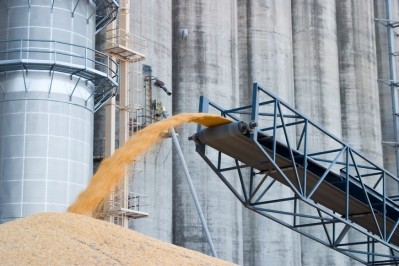‘Increased inflation could shift grain prices upward’

Evidently, feed grain inventories need to drop before any large changes are likely, said economists during an Ag Business Climate Outlook for 2018 webinar from the Center for Commercial Agriculture at Purdue University last Friday (January 5).
On a broad scale, US and world economies are expected to be strong in the coming year, said Chris Hurt, professor of agricultural economics with Purdue University.
“The US and world grain inventories are very large, those inventories are a weight to the marketplace at this point and low prices are the consequence of that and low farm income,” he said.
Ending stocks for wheat, soybeans and corn remain high in the US, which continues to keep domestic grain and oilseed prices low, he said.
Corn stocks have had two years with slight reductions in inventories, he said. An additional reduction could build a case for increased commodity prices in the future; however initial changes are likely to be modest.
Internationally, there has been a slight drop in the inventory of soybeans, said Hurt.
There have also been forecasts of a reduction in earlier estimates of upcoming crop volumes coming out of South America, he added.
Inclement weather in both the US and South America could cut crop yields, causing inventories to drop, said Hurt. “We have [had] some indications in South America there will be continued concerns going through their growing season. The US remains dry in some important production areas,” he added.
Trade deals
One area of remaining concern continues to be international trade and the export market, he said. Trade remains an important outlet for grains and producers of animal proteins.
“The NAFTA renegotiations are going to be very important and critical to agriculture,” he said.
Mexico remains a top destination for exports of US corn, he said. However, a worry remains that the Central American country would turn to other trading partners including Brazil and Argentina.
“This is where that renegotiation of NAFTA as well as other America First policies makes us nervous in agriculture,” said Hurt.
Inflationary factors
There is a possibility that economic growth and increased inflation could shift grain prices upward.
“If we do see the movement toward inflation then I think the guess is then you’re going to see more investment in commodities as inflationary hedge,” he said. “That would bring commodity values up and probably that would include grains.”
Additionally, continued growth in animal production in the US may serve to increase demand for feed and grains, he said.
Livestock sector ‘rebuilding’
Nevertheles, animal production had been in a rebuilding phase, said Jim Mintert, director of the Center for Commercial Agriculture and professor of agricultural economics with Perdue University.
In previous years, a dramatic increase in feed costs really held back production: “But now that we’ve seen grain prices come down, profitability [has] returned to much of animal agriculture.”
Production is expected to increase about 2-3% from last year, he said. “Growth in animal agriculture [means] growth in feed usage and that’s positive for grain prices longer term.”
“I don’t see that slowing down in coming years,” he said. “Especially as we see the positive income numbers around the world, and as consumers and importing countries see incomes start to grow, one of the things they like to do is to change their diet to include more animal protein.”












